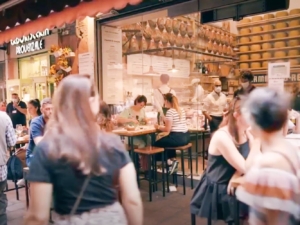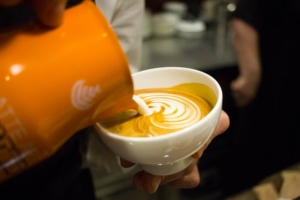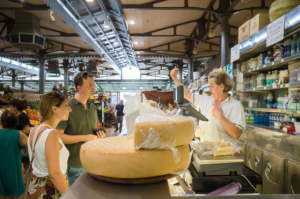Italy's oldest cafes: Caffè Florian and beyond

Italy's coffee culture is famous worldwide with centuries-old cafes serving the beloved beverage.
These cafes not only serve as a place to grab a quick caffeine fix, but also as meeting places for intellectuals, artists, and locals alike.
Discover Italy's oldest cafes, from their rich history and unique charm to the secrets of their success.
Coffee in Italy: a guide to order it
Italy is the country of coffee, no doubt.
Which Italian city is famous for coffee?
Naples and Trieste have a strong tradition, but even Turin, Venice, Rome, and Florence are renowned for their coffee culture.
The most popular coffee in Italy is espresso. When people ask for a caffè, the Italian word for coffee, that's what the barista will serve with a glass of sparkling water and optional sugar at the counter.
Another common coffee is cappuccino, an espresso with milk foam, usually served for breakfast with a brioche.
Want to know which is the cappuccino rule in Italy?
Italians only drink cappuccino in the morning, never after lunch. Baristas will be happy to serve it even in the afternoon, but if you want to travel like a local, order a cappuccino for breakfast.
Now that you know what to order, are you ready to read which are the oldest Italian coffee shops?
The oldest Italian coffee shops
1. Cafè Florian, Venice
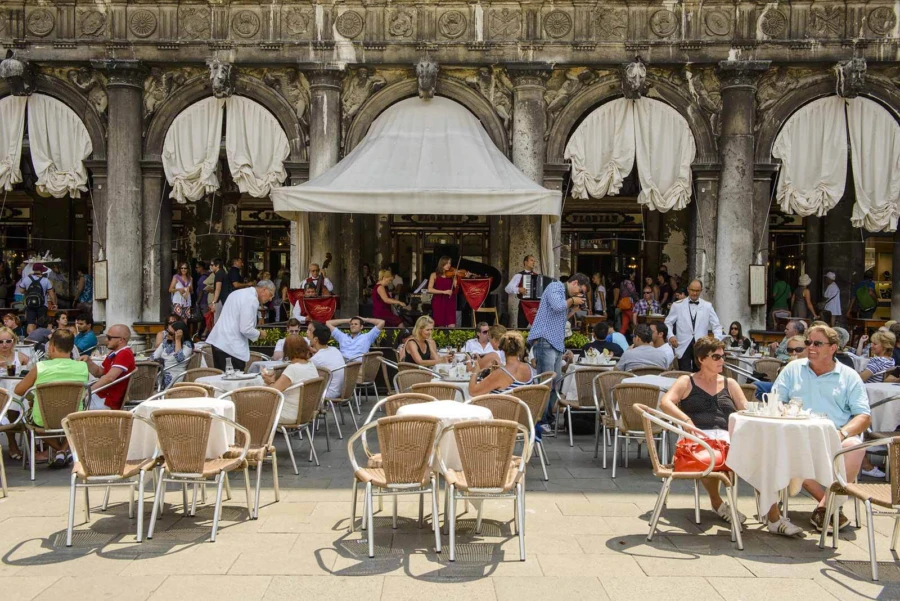
Established on December 29, 1720, in Venice's iconic Piazza San Marco, Caffè Florian holds the title of the oldest coffee house in continuous operation in Italy.
Initially called "Alla Venezia Trionfante" (Triumphant Venice), it soon became known as Caffè Florian, after its founder, Floriano Francesconi.
It was founded in 1720 and Giacomo Casanova and Carlo Goldoni immediately sat down at its tables amidst mirrors and marble.
Initially, ladies could access the Florian only if accompanied, or disguised for the Carnival.
Illustrious guests of world culture and literature have been bewitched by its atmosphere: Lord Byron, Charles Dickens, Johann Wolfgang Goethe and Ernest Hemingway.
At Caffè Florian, an espresso costs around 7 euros (or 3,5 euros at the bar), while a cappuccino is about 12 euros.
Pastries like croissants are 6 euros, and light bites, such as tramezzini or panini, range from 14 to 20 euros.
For a luxurious treat, a traditional afternoon tea costs about 45 euros—a price for history, elegance, and Venetian charm.
Info
Piazza San Marco, 57, 30124 Venice
Phone: +39 041 520 5641
2. Caffè Pedrocchi, Padua

"It was in Padua that I began to see life the Venetian way, with women sitting in cafés. From the excellent restaurateur Pedrocchi, the best in Italy." - Stendhal
Francesco Pedrocchi, a coffee roaster, started one of Italy's earliest coffee shops in 1772.
His son, Antonio, used his father's substantial profits to buy a large building in 1831, which is still standing today. It is an impressive piece of architecture designed in the Greek style and resembles a temple.
During the demolition process to create more space, the floor beneath the street level collapsed. Despite this setback, Pedrocchi discovered an ancient buried church filled with treasures.
This found helped fund the luxurious building and included cool cellars for making lemonade, which was as popular as coffee in those days.
From its founding until 1916, Caffè Pedrocchi was known as the "café without doors" because it never closed, remaining open 24 hours a day.
Info
Via VIII Febbraio, 15, 35122 Padua, Italy
Phone: +39 049 8781231
3. Caffè Greco, Rome

Established in 1760, Caffè Greco holds the title of the oldest coffee shop in Rome and the second oldest in Italy after Caffè Florian.
It has an elegant environment with paintings, mirrors, wooden tables, and marble tops.
Many famous people have visited the cafè throughout the years, including Lord Byron, Mary Shelley, and Buffalo Bill. Hans Christian Andersen even lived there in an upstairs room.
In the Sala Omnibus, you can admire medallions, plaster plaques, and miniatures depicting the artists, poets, and musicians who have frequented the venue over the years.
Info
Via dei Condotti, 86, 00187 Rome, Italy
Phone: +39 06 679 1700
anticocaffegreco.eu
4. Caffè Fiorio, Turin
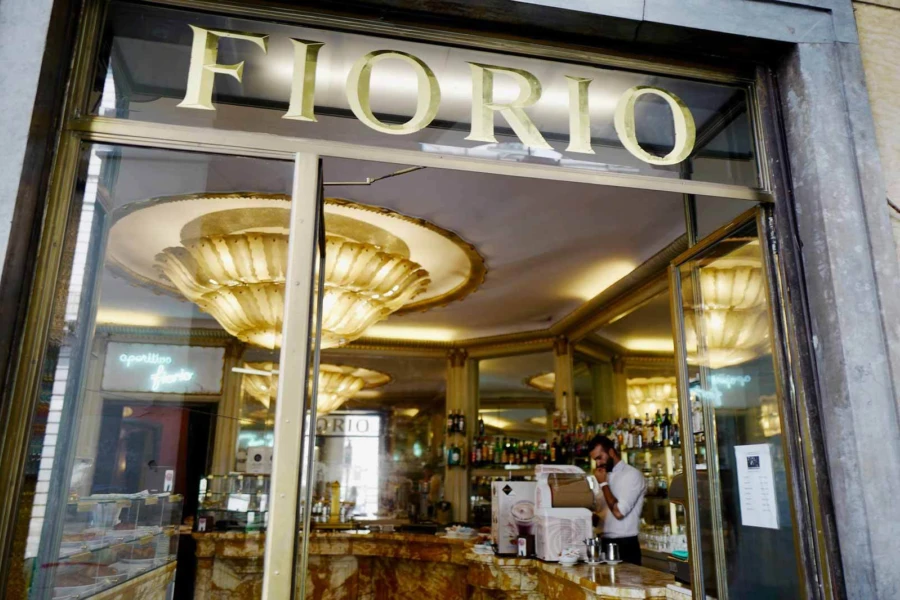
Caffè Fiorio opened its doors in 1780 and became a meeting place for the major intellectuals and politicians.
For a few years, its name was different.
It became "Caffè della Confederazione", then "Caffè dei Codini" and "Caffê Radetzky". But people never stopped calling it "il Fiorio".
In the late 1800s, the café was a popular spot for important thinkers like Nietzsche and political leaders of the Italian Risorgimento. It was so popular that it felt like a part of the government.
The political salon was of such importance that, before opening the hearings, the Sovereign Carlo Alberto usually asked "What is said to Fiorio?"
He wanted to find out what were the orientations of the major events on the part of the political and intellectual class.
Info
Via Po, 8, 10123 Turin, Italy
Phone: +39 011 817 3565
5. Caffè al Bicerin, Turin

In 1763 Giuseppe Dentis, an acquacedrataio, opened a small shop in front of the entrance to the Sanctuary of the Consolata in Turin.
Back then, the place was humble and had simple wooden tables and benches. It stayed that way for almost a century.
Dentis made a popular drink called the bavareisa, by mixing coffee, chocolate, milk, and syrup in large glasses.
The Cafè we see today was built in 1856.
Inside it looks very elegant with wooden walls decorated with mirrors and lamps. It has round white marble tables, a wooden and marble counter, and shelves for sugared almond jars.
In this renovated environment they started selling confectionery, coffee, and chocolate.
They created an evolved version of the bavareisa, called bicerin. Now it's a symbol of the city and you can't say you've been to Turin without trying it.
At first, they served the ingredients separately.
Then, they combined them into 3 types of drinks: pur e fiur (like a cappuccino), pur e barba (coffee and chocolate), and 'n poc'd tut (a little bit of everything).
The last one became very popular and beat the other two options.
So that's the one you'll get when you order your bicerin!
Info
Piazza della Consolata, 5, 10122 Turin, Italy
Phone: +39 011 436 9325
bicerin.it
This article was inspired by a chapter of Cristina Caroli's book "Il Caffè per chi non si accontenta".
Get your copy on Amazon, or better yet, join our Classic Bologna tour to get it from the hands of the author herself.
[Photo credits: Marco Robecchi, Ronnie R, Son of Groucho, an.yonghua, Arnaud Benoist]
